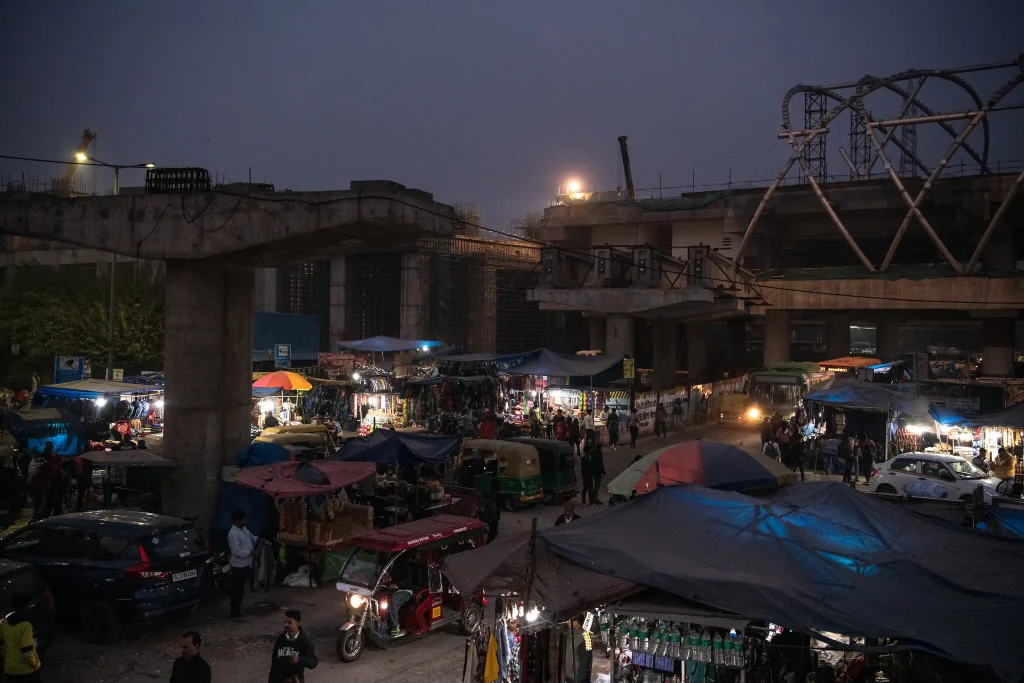India’s economic landscape is experiencing a remarkable upswing, with soaring stock prices and substantial government investments in critical infrastructure projects. The nation’s gross domestic product (GDP) is projected to grow by 6 percent this year, surpassing the rates of economic giants like the United States and China. However, a notable concern looms large: domestic investment by Indian companies is not keeping pace, posing potential challenges for sustained growth.
In contrast to the robust performance of India’s stock markets, there is a discernible slowdown in long-term investments from both domestic and foreign sources. The disparity raises questions about the sustainability of the current economic boom, especially as the government may need to curtail its extensive spending in the near future.
India’s ambitious goal of becoming a developed nation by 2047, coupled with its continually expanding population, demands a more vigorous growth trajectory, ideally between 8 and 9 percent annually. Prime Minister Narendra Modi, amidst a re-election campaign and rallying public support, faces the challenge of addressing the sluggish investment scenario.

Sriram Viswanathan, managing partner at Celesta, a Silicon Valley venture capital fund, sees an opportunity for India amid China’s economic slowdown and geopolitical tensions. He notes, “Investors [are] wanting to fill the vacuum that has been created in the supply chain. That, I think, is the opportunity for India.”
The World Bank acknowledges India’s commitment to infrastructure spending during the pandemic, emphasizing the need for a corresponding surge in corporate investments. The concept of a “crowd-in effect,” where government spending attracts private investment, is deemed crucial for sustained economic growth. Auguste Tano Kouamé, the World Bank’s country director for India, underscores the necessity for deeper reforms to encourage private sector investments.
Despite the booming stock markets in Mumbai, valued at nearly $4 trillion, there is a noticeable decline in foreign direct investment, dropping from an annual average of $40 billion to $13 billion in the past year. Foreign investors appear hesitant, cautious about the stability of India’s economic environment.
A key factor contributing to this caution is Modi’s government, which, while pro-business and stable in leadership, tends to intervene in the economy abruptly. Instances of sudden import restrictions on laptops and retroactive taxes on online betting companies have created uncertainty and impacted businesses. The success of conglomerates like Reliance Industries and the Adani Group, closely associated with Modi’s political circle, further raises concerns about fair business practices.
Arvind Subramanian, an economist at Brown University and former chief economic adviser under Modi’s government, highlights the vulnerability felt by domestic investors, particularly those not affiliated with major conglomerates. He acknowledges the positive aspects of the Modi government’s achievements in improving various aspects of the business environment but points out persistent challenges, including bureaucratic red tape.
Foreign officials responsible for attracting investment to India express concerns about lingering difficulties in doing business, citing red tape as a major obstacle. The slow pace of legal processes and enforcement further deters long-term investments.
The underlying weakness in India’s growth story lies in the skewed distribution of consumer wealth. While a small segment of the population can afford luxury goods, the majority grapples with inflation in essential commodities. Banks, though extending credit to consumers, remain cautious about providing the same support to businesses fearing a prolonged belt-tightening phase for the majority of customers.
Subramanian remains cautiously optimistic, citing the annual growth rate, albeit below 6 percent, and the potential for improved infrastructure to attract more private investment. The uneven distribution of consumer wealth, over time, could contribute to raising overall incomes.
The wildcard in India’s economic trajectory is its ability to capture a substantial share of global business from China. Apple’s gradual shift of its supply chain away from China to India serves as a prominent example. While Apple’s market share in India is currently modest, the intention to increase the production share to 25 percent by 2025 could open up significant possibilities for India on the global stage.
India’s economic success is at a crossroads, with the need for a substantial increase in domestic and foreign investments to sustain the current momentum. While challenges persist, the nation’s potential to capitalize on global economic shifts and ongoing reforms could pave the way for a more robust and inclusive growth trajectory. As the world watches, India stands on the precipice of a transformative economic future.
